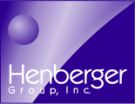How Do I Increase The Value of My Business? - Part Three
Welcome to part three of a series of articles about how to enhance the value of your business. You may remember from last time that we were talking about the following:
Our life in business is full of actions, some of those actions create value, some reduce value and some are value neutral. Obviously the key is to concentrate on those actions that enhance value, minimize or eliminate those that have a negative impact and at least understand that other actions may make sense but have no discernable impact on value.
In other words, you should review your action plans to ensure that you concentrate your efforts on enhancing value.
First of all you need to remember that for an action to affect the value of the business (either positively or negatively), it has to do one of the following:
1. Increase Cash Flows from Assets Already in Place
Increase Cash Flows from Assets Already in Place
d.  Reduce the Tax Rate
Reduce the Tax Rate
Since we’ve defined the value of a business as being equal to the present value of its after-tax cash flows it would hold that any action that can reduce the tax rate for a business over time, for a given operating income, will increase the value of that business.
The tax rate of a business can be reduced over time by doing any or all of the following:
- Moving income from high-tax locales to low-tax or no-tax locales as appropriate and available depending on the particulars of your situation;
- Acquiring net operating loss carry forwards that can be used to shield future income. While not as popular as in the past there are still opportunities in most jurisdictions to acquire loss companies for the purpose of shielding income;
- Using tax planning to reduce the average tax rate paid over time on income.
Hopefully you are using tax planning to your advantage, but you may not appreciate that while you are reducing your current tax burden by getting professional advice this can also have a long term benefit of increasing the value of your business.
e. Reduce Net Capital Expenditures
Reduce Net Capital Expenditures
The term net capital expenditure refers to the difference between capital expenditures and depreciation/amortization. The net capital expenditure is a cash outflow that reduces the free cash flow to the business and as a result may reduce the value of the business.
Part of the net capital expenditure is designed to generate future growth, but part of it may be for the purpose of maintaining the assets that are in place. If a business can reduce its net capital expenditures on assets in place, it will increase value.
During short periods, the capital expenditures can even be lower than depreciation for assets in place, creating a cash inflow from net capital expenditures. The caveat to this is that reducing capital expenditures simply to increase free cash flow in the short term is not necessarily the most prudent approach if those reductions undermine the long-term viability of operations.
Rationalizing expenditures should be done with greater emphasis on generating an appropriate rate of return on investment in those assets.
f. Reduce Working Capital Needs
Reduce Working Capital Needs
Increases in non-cash working capital represent cash outflows, while decreases represent cash inflows. Reducing the non-cash working capital needs of a firm, while keeping growth and risk constant, will increase its value.
The non-cash working capital in a firm can be measured as follows:
Join me for the next edition of ValuationVIEWS for more on how to increase the value of your business.
Article published with permission from Graham Mathew & Partners LLP and Ran One

858.345.4435
How do I increase the Value of My Business? - Part Three
Resources
Copyright Henberger Group Inc.
